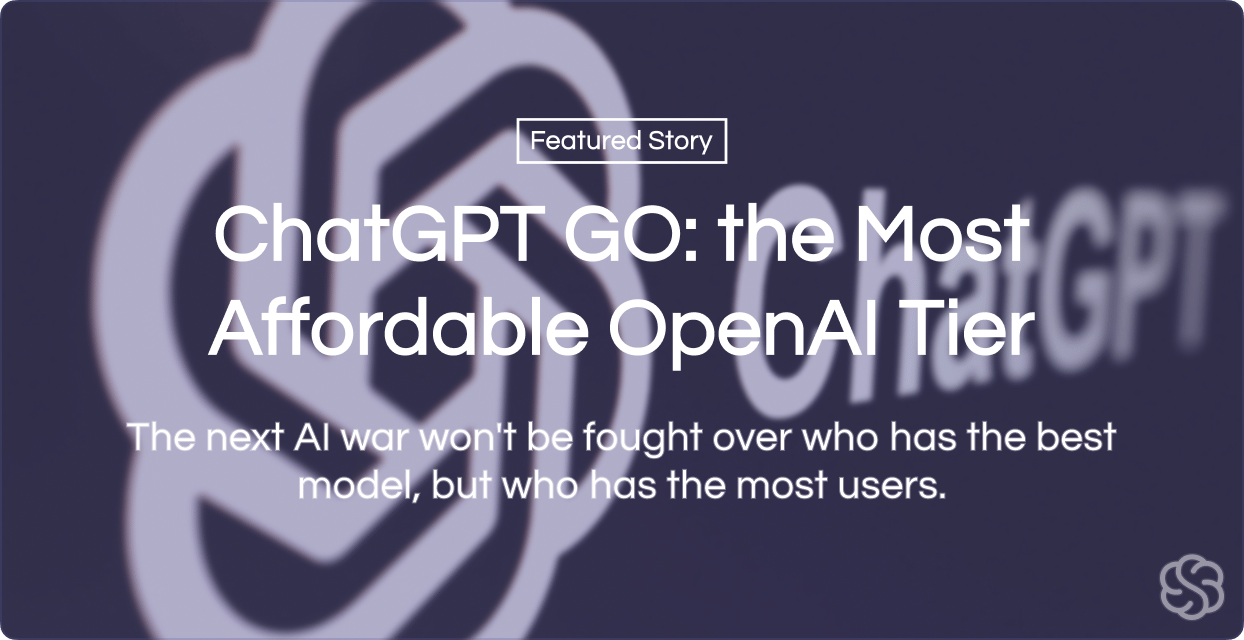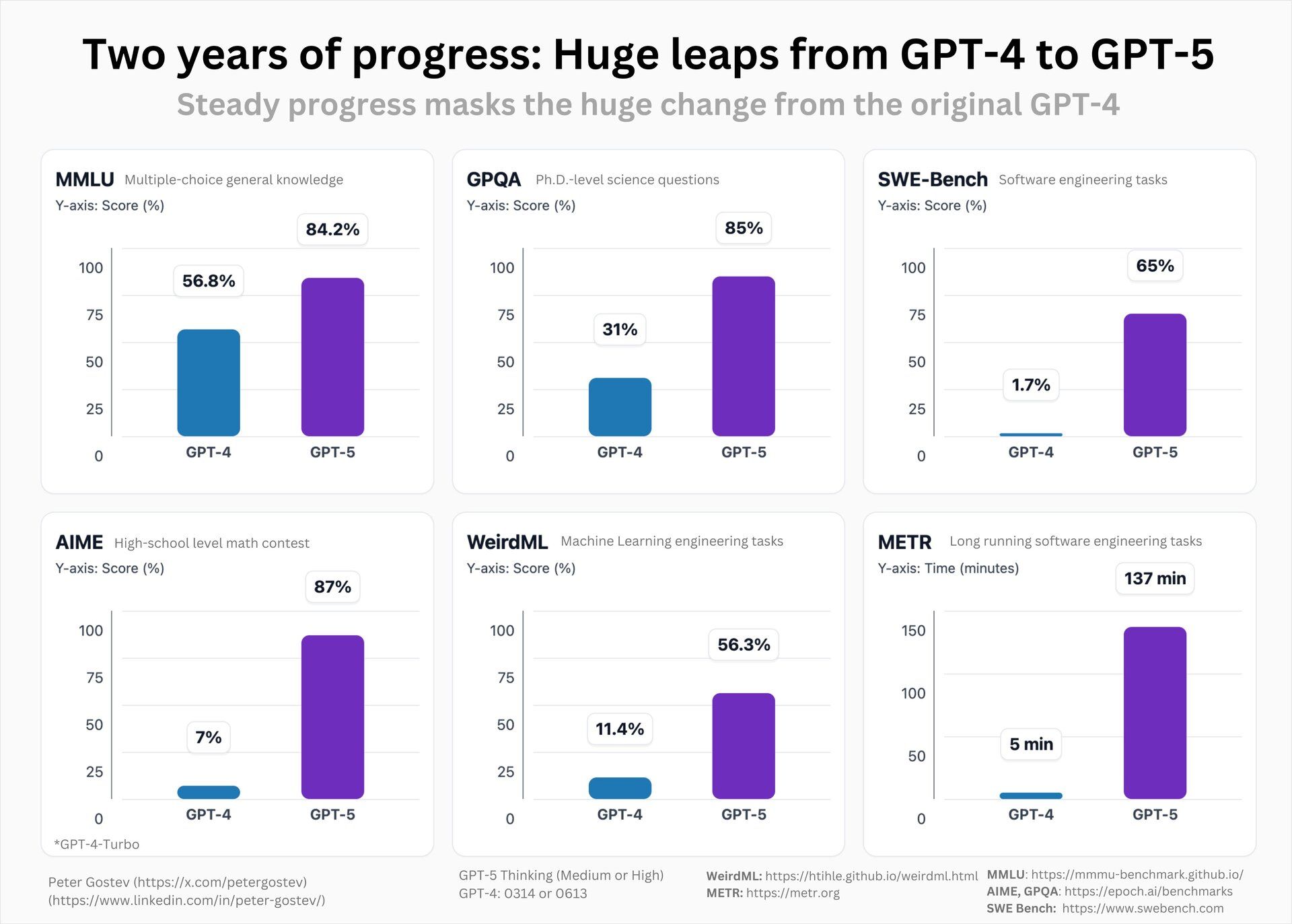Dear Readers,
Anyone who believes that the race for the most powerful AI models will be decided solely in data centers is about to learn otherwise: access, price, and everyday usability are moving to center stage. With ChatGPT Go, OpenAI is testing a genuine low-cost subscription for the first time—a step that shows that habits and ecosystems often carry more weight than pure parameters. Those who scale early will not only gain users, but also their daily routines. In this issue, we look at precisely these shifts: from ChatGPT Go's market test in India to China's “Robot Games” with over 500 humanoid machines to Nvidia's new world models for physical AI. We also show how Figure lets a robot fold laundry – fully autonomously and end-to-end. In short: real breakthroughs that are accelerating the leap from laboratories into our everyday lives. Stay tuned, it's worth it.
In Today’s Issue:
OpenAI is testing a new, cheaper ChatGPT subscription
The first-ever World Humanoid Robot Games in Beijing
Humanoid robot can go from warehouse logistics to folding your laundry
Nvidia's new world models are accelerating the path to "Physical AI"
And more AI goodness…
All the best,

ChatGPT GO: the Most Affordable OpenAI Tier
The Takeaway
👉 Start/optimize for India: mobile-first, short prompts, quick responses, keep an eye on go limits.
👉 Trim GPTs for engagement (useful defaults, targeted use of memory) – goal: recurring sessions.
👉 Use a pricing ladder: Free → Go → Plus/Team; stagger features so that upgrades feel organic.
👉 As a competitor, prepare low-cost tier & local payment flows now before habit lock-in takes effect.
The winner in AI will not only be decided in the data center, but also at the cash register. With ChatGPT Go, OpenAI is testing a low-cost subscription (₹399/month), initially in India: more GPT-5 messages, multimodal tools (images, file uploads), longer memory – in short, the “daily driver” package at an introductory price. This fits into a clear segmentation (Go/Plus/Team/Pro) and shifts the competition: It's not the “biggest models” that count, but low barriers to entry, universal availability, and immediate usefulness.

Why this is explosive: Distribution builds habit, feedback loops, and ecosystem effects (GPT store & builder incentives). Those who scale early occupy the interfaces – web, mobile, desktop – before rivals can adjust their prices and payment methods. For the AI community, this means thinking about products like platforms. Onboarding friction, latency, memory utilization, and simple payment methods are becoming core features – not just parameters. The good news: more users means more experiments and faster learning cycles. Which app would you build if you had ten times more users tomorrow?

India is a huge market that is now being tapped by OpenAI's low-cost model. OpenAI is well aware that its competitors in neighboring China, with their very inexpensive and often open-source AI models, could pose a threat to OpenAI.
Why it matters: An affordable subscription shifts power from “best model” to “best access” – and reinforces lock-in through habit and memory. For builders, this creates a fast test channel with the prospect of engagement-based compensation once revenue programs take hold.
Source:
Ad
Learn from this investor’s $100m mistake
In 2010, a Grammy-winning artist passed on investing $200K in an emerging real estate disruptor. That stake could be worth $100+ million today.
One year later, another real estate disruptor, Zillow, went public. This time, everyday investors had regrets, missing pre-IPO gains.
Now, a new real estate innovator, Pacaso – founded by a former Zillow exec – is disrupting a $1.3T market. And unlike the others, you can invest in Pacaso as a private company.
Pacaso’s co-ownership model has generated $1B+ in luxury home sales and service fees, earned $110M+ in gross profits to date, and received backing from the same VCs behind Uber, Venmo, and eBay. They even reserved the Nasdaq ticker PCSO.
Paid advertisement for Pacaso’s Regulation A offering. Read the offering circular at invest.pacaso.com. Reserving a ticker symbol is not a guarantee that the company will go public. Listing on the NASDAQ is subject to approvals.
In The News
NVIDIA Releases Ultra-Fast AI
NVIDIA has released Nemotron Nano v2, a new 9B hybrid model that is six times faster and more accurate than similarly-sized models, and has also open-sourced the data used to train it.
GPT-5 Unlocks New Medical Discoveries
GPT-5 analyzed a massive, complex medical dataset for ME/CFS, replicating a month's worth of human research in under five minutes while also uncovering new discoveries and potential treatments that the original scientific team had missed.
Baidu Unveils GenFlow 2.0
Baidu has launched GenFlow 2.0, a new general AI agent that simplifies complex workflows by orchestrating over 100 specialized sub-agents to handle multiple tasks simultaneously.
Graph of the Day
In direct comparison to GPT-4, GPT-5 is a huge leap forward. Even though the development leap from 4 to 5 is often considered too small within the AI scene, the change becomes clear upon closer inspection.

Beijing hosts the first World Humanoid Robot Games
Over 500 robots from 280 teams competed in disciplines ranging from sprinting to boxing and practical tasks. The picture: lots of trial and error, but clear progress—a Unitree humanoid ran 1,500 meters in 6:29 minutes. Public benchmarking, a PR signal for China's robotics push, and a good reality check for humanoid capabilities.
Nvidia introduces Cosmos Reason & Co.: World models for physical AI
Nvidia unveiled Cosmos Reason (7B) at SIGGRAPH—a reasoning VLM for robot planning—plus Cosmos Transfer-2 for faster synth data generation, new neural reconstruction libraries (including CARLA integration), and server/cloud stacks. A new feature is the end-to-end path from world model → synth data → simulation → planning → execution, which could significantly accelerate sim-to-real. Source: TechCrunch.
Figure: Helix folds laundry – fully autonomous, end-to-end
Figure shows that its vision-language-action model Helix is folding laundry with a multi-fingered hand for the first time – fully autonomously, end-to-end, without explicit object models. The same model that reoriented packages in logistics now masters deformable fabrics; the architecture remains unchanged, only the data set has changed. This signals true generalization and the path from warehouse to household.

Share Your AI & Robotics Innovation with 200,000+ Readers
Are you building the future of robotics powered by AI? We’re featuring projects at the intersection of artificial intelligence and robotics in Superintelligence, the leading AI newsletter with 200k+ readers. If you have exciting product presentations about your robotics products or significant breakthroughs, please show them to us.
Submit your research or a summary to [email protected] with the subject line “Robotics Submission”. If selected, we’ll contact you about a possible feature.
Question of the Day
Quote of the Day

Rumours, Leaks, and Dustups
Google has secretly launched a new model: Nano-Banana. An image model that enables outstanding changes.











